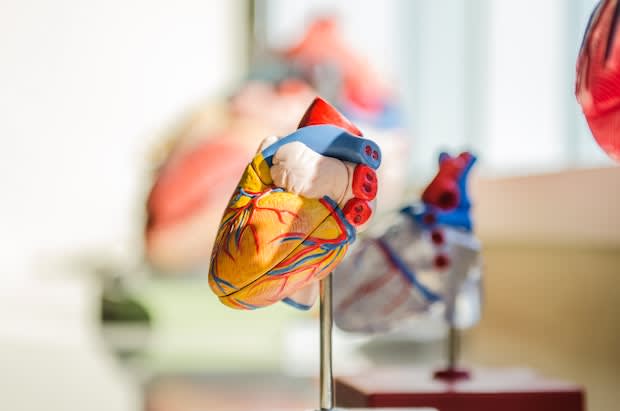Table of Contents
II. Potential Complications of High Cholesterol
d. Peripheral Vascular Disease
Good and Bad Cholesterol
A healthy amount of cholesterol in your body is necessary for hormone production and metabolism. Cholesterol is a waxy and fat-like substance that serves as a building block in cell walls. [1] Generally, there are two forms of cholesterol—the good kind and the bad kind.
High-density lipoprotein (HDL) is referred to as the good kind, while many say that low-density lipoprotein (LDL) is bad cholesterol. HDL cholesterol is considered good because it returns to your liver and can be expelled from your body. On the other hand, LDL cholesterol causes fatty deposits (plaque) in your blood vessels, increasing your risk of health complications. [2]
High cholesterol does not have any symptoms. To diagnose high cholesterol, your doctor will conduct a blood test. [3] If you are diagnosed with high cholesterol, you will likely be recommended Lipitor (Atorvastatin) or Zetia (Ezetimibe) as part of your treatment plan. Understanding the potential complications of high cholesterol can help you be more vigilant. Read on to learn about conditions that high cholesterol can cause.
Potential Complications of High Cholesterol
a. Heart Disease
As time goes by, many lifestyle factors that contribute to high cholesterol can cause plaque to accumulate in your arteries. Once your arteries narrow (atherosclerosis), blood flow to your heart can slow down, leading to heart disease. A common complication of atherosclerosis is chest pain (angina). [4] If your atherosclerosis worsens, you may experience a heart attack. A heart attack can occur because of a blood clot that stops blood flow to your heart. [3]
A heart attack occurs when blood flow to the heart is blocked. A stroke is similar, except that it occurs when blood flow to the brain is blocked. When a stroke occurs, your blood is unable to supply oxygen and nutrients to your brain, damaging brain cells and causing a medical emergency. A stroke can potentially be fatal and requires immediate medical assistance. [5] Having diabetes can exacerbate high cholesterol and increases the risk of heart disease. Sugar coats lipoproteins, which keep them in the bloodstream for longer. This causes build-up in your arteries and encourages plaque formations. Type 2 diabetes, in particular, can cause an imbalance between HDL and LDL cholesterol levels. When HDL cholesterol levels are low, different forms of artery diseases are imminent. [4] Essentially, peripheral vascular disease (PVD) refers to a blood vessel condition that affects parts of the body other than the heart and the brain. Plaque can affect blood circulation throughout the body but tends to occur mainly in the legs and feet. [4] PVD can cause pain and fatigue during physical activity. It can also affect the blood vessels in your arms, stomach, intestines, and kidneys. [6] Hypertension is another name for high blood pressure. It can occur when your arteries are narrowed and hardened from plaque build-up and calcium. Once your arteries are narrowed, your heart is forced to work harder, increasing your risk of heart disease. [4] You will want to prevent complications of high cholesterol before they develop. The best tip is daily aerobic exercise combined with a healthy diet. Adding 30 minutes of swimming, cycling, running, or even walking to your day can give you tremendous results. Try to build a consistent exercise routine by starting with light exercise. Consistency will be more beneficial in the long run than a one-time high-intensity workout. The general guideline for a healthier diet is to avoid fried foods or foods with added sugars because they contain high trans and saturated fat. Increasing your intake of fruits, vegetables, nuts, and whole grains can improve your overall health. Low-fat dairy products, fish, and olive oil can be particularly good for you. Some superfoods high in HDL include: Even if you have high cholesterol, a healthy diet and consistent exercise can make your treatment plan much more effective. Combined with medications like Lipitor (Atorvastatin) or Zetia (Ezetimibe), a healthy all-around lifestyle will make managing your cholesterol levels much easier. The content in this article is intended for informational purposes only. This website does not provide medical advice. In all circumstances, you should always seek the advice of your physician and/or other qualified health professionals(s) for drug, medical condition, or treatment advice. The content provided on this website is not a substitute for professional medical advice, diagnosis, or treatment.
b. Stroke
c. Diabetes
d. Peripheral Vascular Disease
e. Hypertension

Prevention Tips
